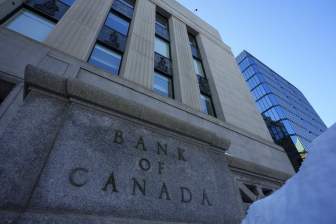B.C.’s NDP government says it plans to cut poverty in the province by 25 per cent over the next five years.

In its new poverty reduction strategy, dubbed TogetherBC, the government is also looking to slash child poverty by 50 per cent in the same period.
The government will be statutorily required to release an annual progress report on the targets beginning in 2020.
The strategy uses 2016 as its baseline year and aims to improve conditions for 140,000 people, including 50,000 children.
WATCH: B.C. throne speech 2019 — poverty reduction and student costs

“Together, we can build a fairer province by bringing down barriers and giving people the services and supports they need to break out of the cycle of poverty,” said Shane Simpson, minister of social development and poverty reduction, in a media release.
The strategy is built on five “foundational areas,” all of which are built on previously announced NDP government policies. They include the new B.C. Child Opportunity Benefit, which kicks in in 2020; minimum wage hikes building to the NDP’s promise of $15 an hour; the provincial child care program; hikes to welfare and disability assistance rates; and plans to “leverage” federal cash and programs.
- Cowichan case blamed for sinking B.C. property deals, including luxury hotel purchase
- One of Kimberly Proctor’s killers denied parole again, board believes he is still a risk
- Egypt and Iran protest Seattle FIFA match over Pride celebrations
- Highway 1 east of Golden, B.C. closed due to crash, snowy weather
The Opposition BC Liberals slammed the plan as “underwhelming” for a document that took 15 months to develop at a cost of $1.2 million.

Get breaking National news
“After nearly two years in office, the NDP has released its long-awaited poverty reduction plan – except there’s nothing new in this plan to actually help people out of poverty,” says Marvin Hunt, Social Development and Poverty Reduction critic and Surrey-Cloverdale MLA in a statement.
“This reads more like another NDP re-announcement than a substantive government strategy.”
The plan also points to six “priority areas” for government action, many of which also draw on funding from budget 2019 or earlier NDP government policies such as the elimination of bridge tolls. They include supporting renters and increasing the stock of affordable housing and working to combat homelessness through the ongoing campaign to build modular and new supportive housing.
WATCH: (Aired: Nov. 2018) Liberal announce details of their national poverty-reduction strategy

The plan includes a slew of programs aimed at education and training, including previously announced programs such as eliminating interest on student loans, funding for trades training and tuition-free adult ESL training.
Other priority areas include a slew of measures aimed at children and families, workplace protection and assistance for vulnerable people, previously announced affordability measures such as eliminating MSP and increasing carbon tax credits, and “investing in social inclusion” through measures such as the Human Rights Commission and support for gender diversity.
The province has also created a Poverty Reduction Advisory Committee, made up of experts, advocates, Indigenous people and people who have lived through poverty, which will advise the province and include a letter in the province’s annual report.
The strategy also references the 2018 creation of an expert committee to study a basic income program for the province, which was a part of the NDP’s Confidence and Supply Agreement with the BC Greens. That panel is due to return its recommendations to government by 2020.








Comments